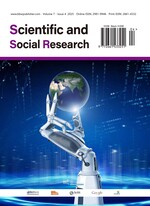From the Perspectives of Legal Positivism, Natural Law, and Legal Liberalism, Respectively, What are the Different Understandings and Positions on the Legal Personhood of AI?
Abstract
With the development of artificial intelligence (AI), conflicts over the social function of AI arise. This article will be dedicated to the discussion of the probability and necessity of recognizing the legal personhood of AI through the lenses of three major jurisprudential schools: legal positivism, natural law, and legal liberalism. The goal is to find out the possible path of the legal positioning of AI to maximize the benefits of AI use. Therefore, this essay can serve as a theoretical review of the advantages and disadvantages of acknowledging AI’s legal personhood. The essay first discusses the central logic of three major jurisprudential schools, as well as the current studies on AI’s role in the legal field. Then, AI is put under the lens of these jurisprudential schools. This essay will conclude that AI can and should be considered a legal person because AI’s legal personhood can bring social benefits.
References
Solum BL, 1992, Legal Personhood for Artificial Intelligence. North Carolina Law Review, 70(4): 1232–1287.
Mok K, 2017, The New Stack: Tech Culture. https://thenewstack.io/meet-first-robot-granted-citizenship-nation/
Stryker CEK, 2024, IBM: What is Artificial Intelligence. https://www.ibm.com/topics/artificial-intelligence
Kurki VA, 2019, The Legal Personhood of Artificial Intelligences, in A Theory of Legal Personhood. Oxford Academic, Oxford, 175–190.
Lawson FH, 1957, The Creative Use of Legal Concepts. New York University Law Review, 1957(32): 907–915.
Supreme Court, Tasmania, Australia, 1996, In Re the Estate of the Late K. https://hdl.handle.net/10822/893470
Naffine N, 2003, Who are Law’s Persons? From Cheshire Cats to Responsible Subjects. The Modern Law Review, 66(3): 346–367.
Barad K, 2003, Posthumanist Performativity: Toward an Understanding of How Matter Comes to Matter. The University of Chicago Press, Chicago.
Desplat DJ, 2015, “Death by Hanging”: The Nuremberg Trials. https://blog.nationalarchives.gov.uk/death-hanging-nuremberg-trials/
Mawani R, 2022, The Ship, the Slave, the Legal Person. Studies in Law, Politics, and Society, 2022(87B): 19–42.
Steiner AH, 2007, Legal Personality, in International Encyclopedia of Comparative Law. Vol. 4, Persons and family. Brill, Leiden.
Supreme Court Judgments, 1997, Winnipeg Child and Family Services (Northwest Area) v. G.
Lewis R, 2013, When Does a Human Life Begin? 17 Timepoints. https://dnascience.plos.org/2013/10/03/when-does-a-human-life-begin-17-timepoints/
Wolfe C, 2006, Natural Law Liberalism. Cambridge University Press. New York.
Walla AP, 2024, Oxford Bibliographies: Philosophy. https://doi.org/10.1093/OBO/9780195396577-0441
Harris J, 2021, Human Beings, Persons and Conjoined Twins: An Ethical Analysis of the Judgment in Re A. Medical Law Review, 9(3): 221–236. https://doi.org/10.1093/medlaw/9.3.221
Hunter R, 2013, Contesting the Dominant Paradigm: Feminist Critiques of Liberal Legalism, in The Ashgate Research Companion to Feminist Legal Theory. Routledge, London, 11–29.
Fineman MA, 2004, The Autonomy Myth. The New Press, New York.
Arif AKMA, 2023, AI Ethics: An Empirical Study on the Views of Practitioners and Lawmakers. IEEE Transactions on Computational Social Systems, 10(6): 2971–2984. https://doi.org/10.1109/TCSS.2023.3251729
Nicholas KCCG, 2023, Worldwide AI Ethics: A Review of 200 Guidelines and Recommendations for AI Governance. https://www.sciencedirect.com/science/article/pii/S2666389923002416
Marcos EKMN, 2020, AI in Legal Services: New Trends in AI-enabled Legal Services. Service Oriented Computing and Applications, 2020(14): 223–226.
Athuraliya A, 2024, Advantages and Disadvantages of Artificial Intelligence. https://creately.com/guides/advantages-and-disadvantages-of-artificial-intelligence/
Logvinova MG, 2024, Bloomberg Law: Best Use of Generative AI in Law Practice Melds Human and Machine. https;//news.bloomsberg.com/us-law-week/best-use-of-generative-ai-in-law-practice-meldds-human-and-machine#
Jowitt J, 2020, Assessing Contemporary Legislative Proposals for their Compatibility with a Natural Law Case for AI Legal Personhood. AI & Society, 2020(36): 499–508.
Chesterman S, 2020, Artificial Intelligence and the Limits of Legal Personality. International Comparative Law Quarterly, 69(4): 819–884. https://doi.org/10. 1017/S0020589320000366
Bryson JJ, Diamantis ME, Grant TD, 2017, Of, for, and by the People: The Legal Lacuna of Synthetic Persons. Artificial Intelligence and Law, 2017(25): 273–291.
Ripken SK, 2019, Legal Theories of the Corporate Person, in Corporate Personhood. Cambridge University Press, Cambridge, 21–57.
The European Parliament, 2020, Regulation 2020/2015(INI) Resolution of 20 October 2020 on Intellectual Property Rights for the Development of Artificial Intelligence Property Rights. https://www.europarl.europa.eu/doceo/document/TA-9-2020-0277_EN.html
Zhuk A, 2023, Navigating the Legal Landscape of AI Copyright: A Comparative Analysis of EU, US, and Chinese Approaches. AI and Ethics, 4(4):1299–1306.
Metz R, 2022, AI Won an Art Contest, and Artists are Furious. https://edition.cnn.com/2022/09/03/tech/ai-art-fair-winner-controversy/index
Sarbey B, 2016, Definitions of Death: Brain Death And what Matters in a Person. Journal of Law and the Biosciences, 3(3): 743–752. https://doi.org/10.1093/jlb/lsw054
Dolan BKC, 2024, UK Inquest Law Blog: Defining and Declaring Death. https://www.ukinquestlawblog.co.uk/defining-and-declaring-death/
Mwiti D, 2024, Neptune.ai: Neptune Blog. https;//neptune.ai/blog/reinforcement-learning-applications
Hassabis D, n.d., Google DeepMind: AlphaGo. https://deepJpwitmind.google/research/breakthroughs/alphago/
Family Court, New Plymouth, 1995, In the Matter of Baby P (An Unborn Child), NZFLR 577.
The European Parliament, 2020, Intellectual Property Rights for the Development of Artificial Intelligence Technologies. https://eur-lex.europa.eu/legal-content/EN/TXT/PDF/?uri=CELEX:52020IP0277

